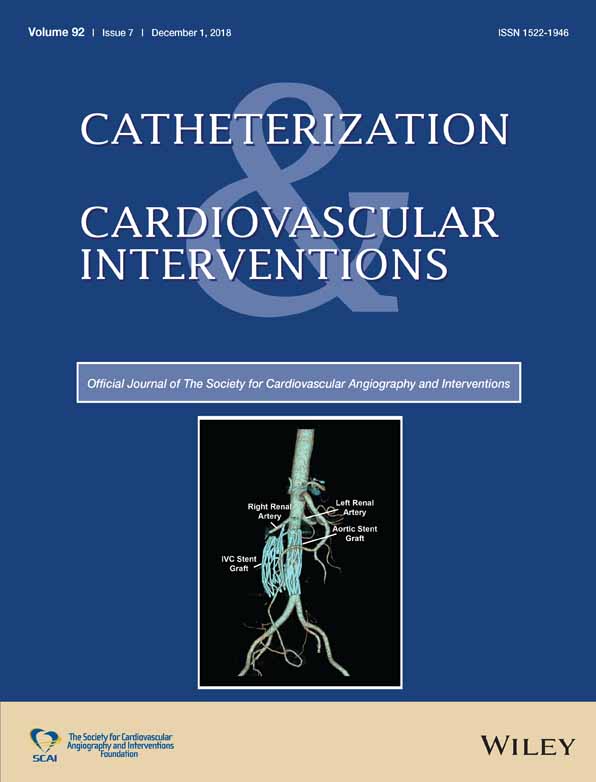Standardized bench test evaluation of coronary stents: Biomechanical characteristics
Abstract
Objectives
The purpose of the study was to develop a standardized and global bench test protocol to evaluate the biomechanical characteristics of the most currently used drug-eluting coronary stents.
Background
The use of coronary stents has contributed to the reduction of cardiovascular mortality but can be associated with specific complications. Improving the biomechanical matching between the stents and the coronary anatomy may reduce these complications.
Methods
We assessed five commercially available drug-eluting stents: the Absorb, Orsiro, Resolute Onyx, Synergy, and Xience Alpine stents. Following stent deployment at nominal pressure in ambient air, radial elastic recoil and foreshortening were measured. Flexibility (crimped and deployed stents) and longitudinal and radial resistances were evaluated using a mechanical tester.
Results
Biomechanical characteristics were significantly different for all tested devices (ANOVA, P < 0.01). The Synergy, Orsiro, and Xience Alpine stents presented the lowest elastic recoil. The Synergy and Resolute Onyx stents were the most flexible devices. The Xience Alpine and Absorb stents had the highest longitudinal and radial resistances.
Conclusions
Drug-eluting coronary stents used in current clinical practice have very different biomechanical characteristics, which should be taken into consideration to select the most appropriate device for each clinical situation.




